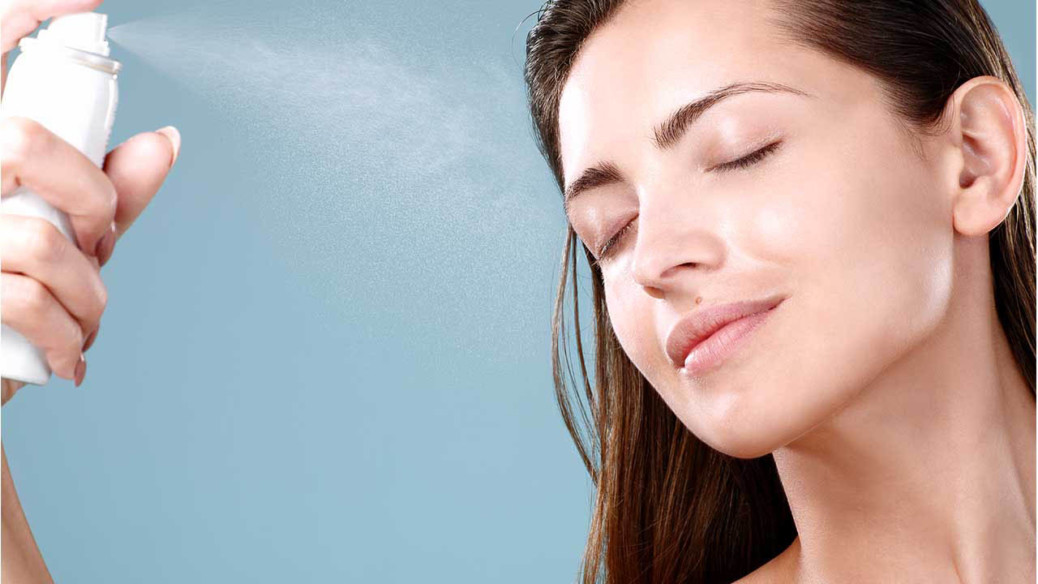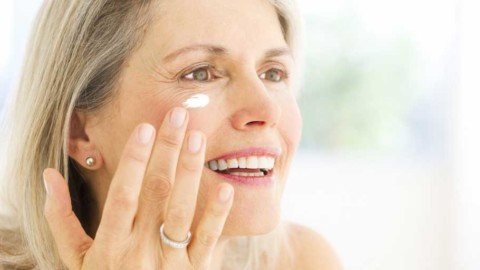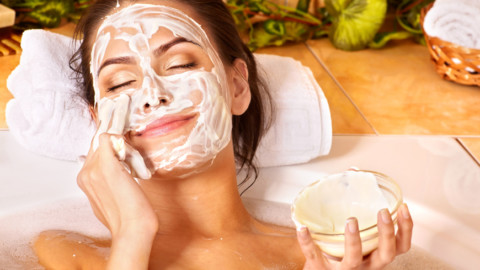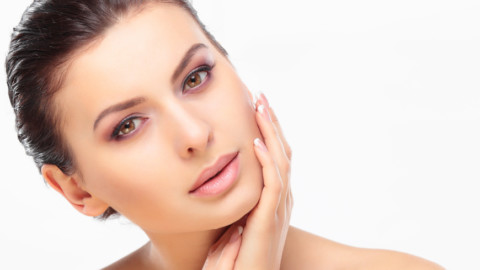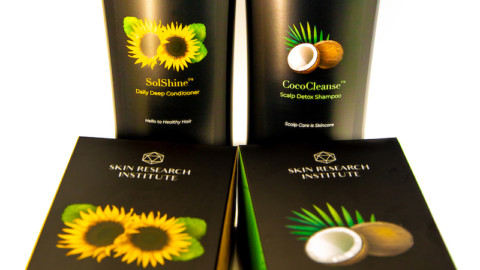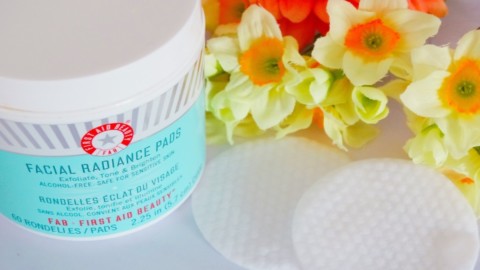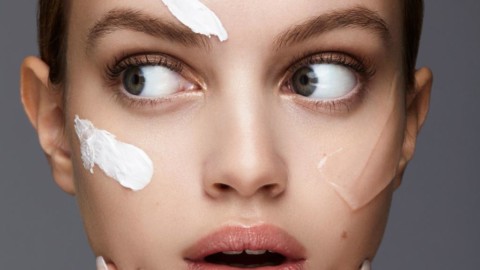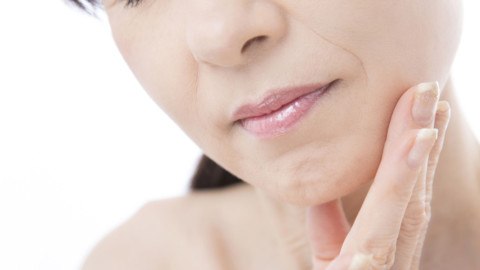Since when did makeup have so many steps? Even if you’re far from a novice, it’s normal to feel like you need a makeup dictionary. In the YouTube era, the average makeup routine requires layer-after-layer of goop — and so, introduces the need for different sprays (and more confusion). So to make your life easier, we’ll review the two most common types: setting sprays and finish sprays.
They sound pretty similar, right? But on a more technical level, they’re quite different. In beauty lingo, the step of “finishing” is NOT the same as “setting”. Knowing the difference will transform your makeup routine, securing a fresher result without all the second-guessing (and worry lines!). Take notes as we uncover the difference between sprays and finishing sprays.
Setting Spray
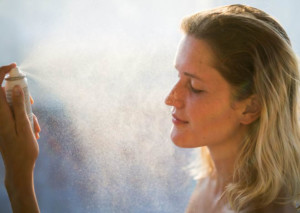
Think of setting spray as makeup glue. It’s designed to mesh your makeup into one layer for a fresher and more natural effect.
But you may have heard that setting sprays let your makeup last longer. Let’s put this rumor to rest: setting sprays are NOT designed to prolong your makeup, but instead, finishing sprays are meant for this purpose.
Setting sprays, however, are for smoothing and merging your makeup. Don’t underestimate the importance of this step
Why does this step matter?
We all know the dilemma of patchy makeup. Even if you left the house, smooth and polished, you return by five with that tired, makeup-hangover look– it’s as if your products tried to abandon you, creating an awkward mash of concealer and pigment. Setting sprays work to prevent this problem so your pigments don’t become spotty or slick.
Unite your makeup: no more slip and slide
By applying a setting spray to your makeup layers, they fuse together instead of spreading apart. If you sweat often through the day or use a variety of products in your beauty routine, using a setting spray will seal together all your work. Essentially, the setting spray will merge foundation, concealer and powder into layer of product. So although setting spray won’t prolong your makeup (except for slippage protection), you should appreciate its blending value.
Setting your makeup texture: A more natural effect
In the good old days of makeup, we could just cake-it-and-go. But now the standard texture is more of a natural radiance to the skin, without any visible powder. Setting spray lets you achieve this effect by melting away the dry, dusty look.
Since setting spray contains botanical oils, its hydrating mist flattens the puffy microspheres in the powder. You’re left with a more natural sheen instead of a powdered face. Your makeup will appear more fresh and skin-like, giving you a confidence boost that says, “I’m not hiding my face!”.
Finishing spray
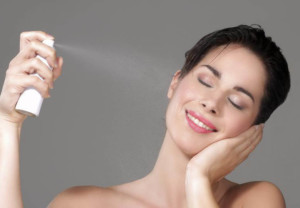 Finishing spray is much simpler because it’s the final step. A few squirts will add longevity and stay-power to your makeup. You’ll apply it when you’ve completed your look, holding the bottle about 10 inches away from your face.
Finishing spray is much simpler because it’s the final step. A few squirts will add longevity and stay-power to your makeup. You’ll apply it when you’ve completed your look, holding the bottle about 10 inches away from your face.
Okay, let’s briefly recap the difference between finish spray and setting spray. Unlike a setting spray, which just fuses the makeup layers together, a finishing spray keeps the layers budge-proof. But here’s where the information gets tricky: some brands market their spray as a “setting” product even if it’s a finishing spray. Why? Because the term, “setting spray” sounds like it’s more effective for holding your makeup wear, when in reality, that’s the job for a finishing spray.
To avoid confusion, always read the ingredient label. Finishing sprays will usually have alcohol early in the ingredient list, while setting sprays will not. For example, Urban Decay’s All-Nighter Setting Spray is actually a finishing spray. As long as you’re informed about mislabelling, you can make your selection based on the formula, not labelling.
Next, we’ll learn how to choose the right finish spray. Read on.
Finishing spray for skin type
- Oily skin
Does your skin get shiny? Oil-absorbing finishing sprays help keep your skin grease-free for hours. Just beware of mixing an oil-absorbing finishing spray with an oil-absorbing primer– the double oil-sucking action can dry your skin.
- Dry skin
For those with dry skin, you need a moisturizing finishing spray. Creating a dewier look, this type of finishing spray will hydrate your face while locking-down your makeup. Not a bad combo.
Water-based vs. silicone-based finishing spray
Finishing sprays are available in two main formulas: water-based or silicone-based. You should choose the formula that matches with your skin type and foundation type. Otherwise, if the chemistry is off balance, your makeup will muddle too.
Water-based finishing spray

If you want a hydrating, lightweight finish, choose a water-based finishing spray. It should be applied over a water-based foundation to keep your makeup layers well-blended.
But you can cheat the rules a bit. Since finishing spray is a light mist and the final layer, you won’t deal with as much ingredient-clashing mayhem as you would with setting spray. So even if you’ve got a silicone-based foundation underneath, the water-based spray may not repel. It’ll just create a glowy veil over your makeup– most likely. Yet, every product formula is unique so you may have to experiment to achieve the right layering combo.
Silicon-based finishing spray
![]()
Creating a thicker protective barrier, a silicone-based finishing spray offers full-on stay power for makeup. Unlike the water-based formula, silicone provides a more intense guard that tends to hold longer.
BUT wait–like all perks, there’s always a con. Silicone is heavy in texture, leaving your skin with little breathing space– bad news for acne-prone skin! As you sweat through the day, the sebum and dead skin can get trapped beneath the silicon layer, creating a party of grossness on your face.
So if you have sensitive or acne-prone skin, save the silicone-based finishing spray for special occasions like weddings or birthdays.
Ideally, using both a finishing spray and setting spray will deliver the most professional results. Of course, this level of maintenance depends on your patience and budget; in other words, don’t feel guilty about being practical with your makeup. Not everyone has the time or sanity to be an amatuer artist.
Facial sprays might seem like a high-maintenance duty at first. Yet, once you know your options and needs, finding the ideal formula will become the best long-term relationship you’ve had with any favorite product. Ultimately, there’s a reason why facial sprays have become so popular, and for some, an addiction. As with any obsession, the payoff is worth pursuing. And in the case with finish sprays and setting sprays, nobody should ever settle for less.

